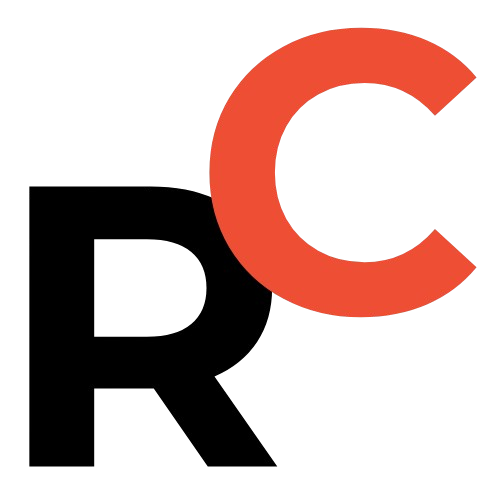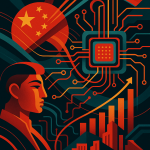Key Points
- Core innovation: Moon’s Dark Side’s Kimi K2 Thinking natively enables “thinking while using tools”, supporting sustained autonomous tool use for up to 300 rounds.
- Benchmarks: Reported SOTA — 44.9% on “Humanity’s Last Exam” (vs GPT-5 (High) 41.7%) and 60.2% on BrowseComp (human average 29.2%).
- Context & pricing: Offers a 256K token context window and production API pricing (Standard: ¥4 input / ¥16 output per 1M tokens; Turbo: ¥8 input / ¥58 output per 1M tokens; cached hits reduce input to ¥1).
- Market & downloads: Kimi saw ~4.2M new downloads in October but a month-on-month decline of over 13%, while ecosystem apps like Doubao (~28M) and Yuanbao 元宝 (> 13M, +14% MoM) demonstrate distribution advantages.
- Commercial gap: Strong agentic capabilities give a technical edge, but scaling requires tighter ecosystem integrations (e.g., Taobao 淘宝 / Jingdong 京东 links) and conversion into habitual, high-frequency user scenarios.

Kimi K2 Thinking arrives as a new open-source thinking model that natively blends long-form reasoning with autonomous tool use.
Quick take — what this article covers
This piece breaks down the Kimi K2 Thinking release from Moon’s Dark Side (pinyin: Yuè zhī ànmiàn 月之暗面).
It covers technical claims, benchmark performance, API details and pricing, market context, downloads, commercialization attempts, and what will determine Kimi’s fate.
It’s written for investors, founders, techies, and marketers who want a clear view of where an agent-style, tool-native model fits in the AI landscape.

Resume Captain
Your AI Career Toolkit:
- AI Resume Optimization
- Custom Cover Letters
- LinkedIn Profile Boost
- Interview Question Prep
- Salary Negotiation Agent

Kimi K2 Thinking: the core innovation
Moon’s Dark Side calls this release “Kimi’s most capable open-source thinking model to date.”
The model is trained under a “model-as-agent” paradigm and presented as a next-generation Thinking Agent.
Its defining claim is native integration of “thinking while using tools”, meaning the model can call external tools while it reasons without human prompts in between.
The team reports sustained, autonomous tool usage over long sessions—up to 300 rounds of tool calls and iterative thinking—aimed at improving continuity and stability on complex problems.
Moon’s Dark Side highlights gains in agentic search, agentic programming, writing, and comprehensive reasoning.

Benchmark performance: SOTA on multiple fronts
Kimi K2 Thinking is reported to have reached state-of-the-art (SOTA) on several benchmarks.
On the 100-plus-discipline suite known as “Humanity’s Last Exam” (where search, Python, and web browsing are permitted), Kimi K2 Thinking scored 44.9%.
For comparison, the Kimi team reported GPT-5 (High) at 41.7% on the same test.
In information-dense browsing tasks, Kimi also showed strong results on BrowseComp.
Human average performance on BrowseComp was reported at 29.2%, while Kimi K2 Thinking achieved 60.2%, setting a new SOTA for that benchmark.
The release notes also point to incremental gains on software engineering benchmarks, including SWE-Multilingual, the SWE-bench validation set, and terminal/command-line tests—suggesting better programming-related capabilities.

Find Top Talent on China's Leading Networks
- Post Across China's Job Sites from $299 / role, or
- Hire Our Recruiting Pros from $799 / role
- Qualified Candidate Bundles
- Lower Hiring Costs by 80%+
- Expert Team Since 2014
Your First Job Post

What those scores actually suggest
Benchmarks indicate the model is particularly strong at tasks that require persistence, iterative search, and tool chaining.
High BrowseComp and Humanity’s Last Exam scores imply the model’s strengths are in agentic workflows where external tools and multi-step reasoning are core to the task.
That pattern aligns with the team’s emphasis on thinking-as-you-go rather than one-shot generation.

ExpatInvest China
Grow Your RMB in China:
- Invest Your RMB Locally
- Buy & Sell Online in CN¥
- No Lock-In Periods
- English Service & Data
- Start with Only ¥1,000

General capabilities and a quick writing test
Moon’s Dark Side reports broad improvements across creative writing, academic research, and empathetic/personal responses.
A National Business Daily (每日经济新闻) reporter ran the same prompt set as the Kimi team to test a high-school-level narrative modeled on the 2025 Beijing gaokao prompt “When Numbers Shine” (“数字闪耀时”).
The output had a complete structure and remained on topic.
The reporter noted the phrasing could feel slightly stiff in parts—an artifact seen in prior K2 releases.

API, context window, and pricing — what builders need to know
Kimi K2 Thinking’s API is listed on the Kimi Open Platform.
The API supports up to a 256K token context window and retains the same pricing as the earlier Kimi K2-0905 release.
Pricing announced by Moon’s Dark Side:
Standard API: ¥4 RMB input per 1M tokens (≈ $0.56 USD), ¥16 RMB output per 1M tokens (≈ $2.22 USD).
Cached hits reduce input cost to ¥1 RMB (≈ $0.14 USD).
Turbo API (up to 100 Token/s generation): ¥8 RMB input per 1M tokens (≈ $1.11 USD), ¥58 RMB output per 1M tokens (≈ $8.06 USD).
Cached hits reduce input cost to ¥1 RMB (≈ $0.14 USD).
Currency conversion used above: 1 USD ≈ ¥7.20 (so ¥1 RMB ≈ $0.14 USD).
Prices are listed as announced by the Kimi platform; regional variations or updates may apply.

Why the 256K token window matters
A 256K-token context window supports large, multi-document workflows, long-form reasoning sessions, and tool history persistence.
For agentic workflows that rely on memory or a long chain of searches and tool calls, the context size aligns with the release’s emphasis on multi-step, sustained reasoning.

Market context: fast iteration and intense competition
Model releases and product iteration are accelerating across the industry.
QuestMobile’s Q3 2025 reporting—cited by the Kimi announcement and coverage—noted that leading internet groups completed 182 model releases/updates/iterations from January to September 2025.
That averages to roughly one model update every 5.7 days.
The pace underscores how quickly capabilities shift and how short model lifecycles can be in this market.
App-level metrics show strain for native apps: about 60% of native apps experienced negative growth in Q3.
That shrinkage tightens the window for independent developers and smaller teams to build sustainable, standalone app businesses.
Large ecosystems are consolidating distribution and user attention, making go-to-market and monetization harder for standalone models.

Downloads and ecosystem pressure
Liangziwei Research (量子位智库, pinyin: Liàngzǐwèi zhìkù) data cited in the coverage shows Kimi and DeepSeek recorded strong but declining downloads in October.
Kimi had approximately 4.2M new downloads.
DeepSeek had approximately 3.6M new downloads.
Both experienced month-on-month declines of over 13% versus September.
By contrast, ByteDance’s “Doubao” (pinyin: Dòubāo 豆包) led with nearly 28M new downloads.
Tencent’s “Yuanbao” (pinyin: Yuánbǎo 元宝) posted over 13M new downloads and a 14% month-on-month increase.
These figures show the distribution advantage that ecosystem-backed products still hold.
Cross-industry entrants are also accelerating model releases inside their owned business scenarios.
For example, Meituan’s LongCat (pinyin: Lóngmāo 龙猫) team recently announced LongCat-Flash-Omni, another ecosystem-backed model release.

Lower interaction costs and shifting monetization signals
QuestMobile highlighted falling per-user token consumption as a structural change.
Lower interaction costs point to an efficiency phase where vendors must drive value rather than simply maximize token usage.
That implies commercialization will reward scenario fit, cost control, and repeat engagement more than raw per-token revenue.

Kimi’s commercialization attempts and ecosystem gaps
Since earlier K2 releases, Kimi has explored vertical partnerships to find business pathways.
During the 2025 Double 11 shopping festival, National Business Daily testers evaluated Kimi’s updated “shopping guide.”
The feature could recommend products and include Taobao (Taobao 淘宝) or JD.com (Jingdong 京东) links.
However, most recommended items came from third-party agent stores rather than integrated official flagship stores.
That reveals an ecosystem integration gap compared with ByteDance’s Doubao+Douyin and Alibaba’s Tongyi+e-commerce synergies.
Data suggests vertical, scenario-focused AI apps still have room to grow.
ByteDance’s domain-focused tools and Ant Group’s AQ Health Manager (AQ 健康管家) saw triple-digit growth in some vertical metrics, showing that clear scenario fit and value matter more than raw capability alone.

What will determine Kimi’s fate?
Kimi K2 Thinking demonstrates meaningful depth in long-form reasoning and tool-based agentic workflows.
That gives Moon’s Dark Side a credible technical differentiator in the “thinking-agent” niche.
But technology leadership is only the entry ticket in a market where platforms control distribution, payments, and ecosystem-level integrations.
The real test is translating long thinking and strong reasoning into high-frequency, user-visible scenarios—like agent search, programming assistance, and deep research workflows—where users build habitual reliance.
Stickiness, repeat engagement, and a viable commercial model will determine whether Kimi converts technical gains into sustainable market share.

Actionable takeaways for investors, founders, techies, and marketers
Investors: Look for evidence of vertical integrations or partnerships that solve real workflow pain points and create recurring usage.
Founders: If you’re building on Kimi K2 Thinking, prioritize flows where multi-step tool use and long context provide clear ROI for users.
Tech leads & engineers: Test agentic workflows end-to-end with the 256K token context to validate persistence and tool-chain stability under realistic loads.
Marketers & product folks: Focus on scenario fit and distribution partnerships, not just raw capability comparisons.

Bottom line
Kimi K2 Thinking is notable for natively combining long-form reasoning and tool use in an open-source model.
It shows SOTA performance on several benchmarks and brings a 256K-token context window and production-oriented API pricing to the table.
But the road to market leadership is crowded and dominated by ecosystem players who control distribution and commerce integrations.
For Kimi to scale, it must turn technical depth into habitual, high-frequency user scenarios and stronger ecosystem ties.
Kimi K2 Thinking






